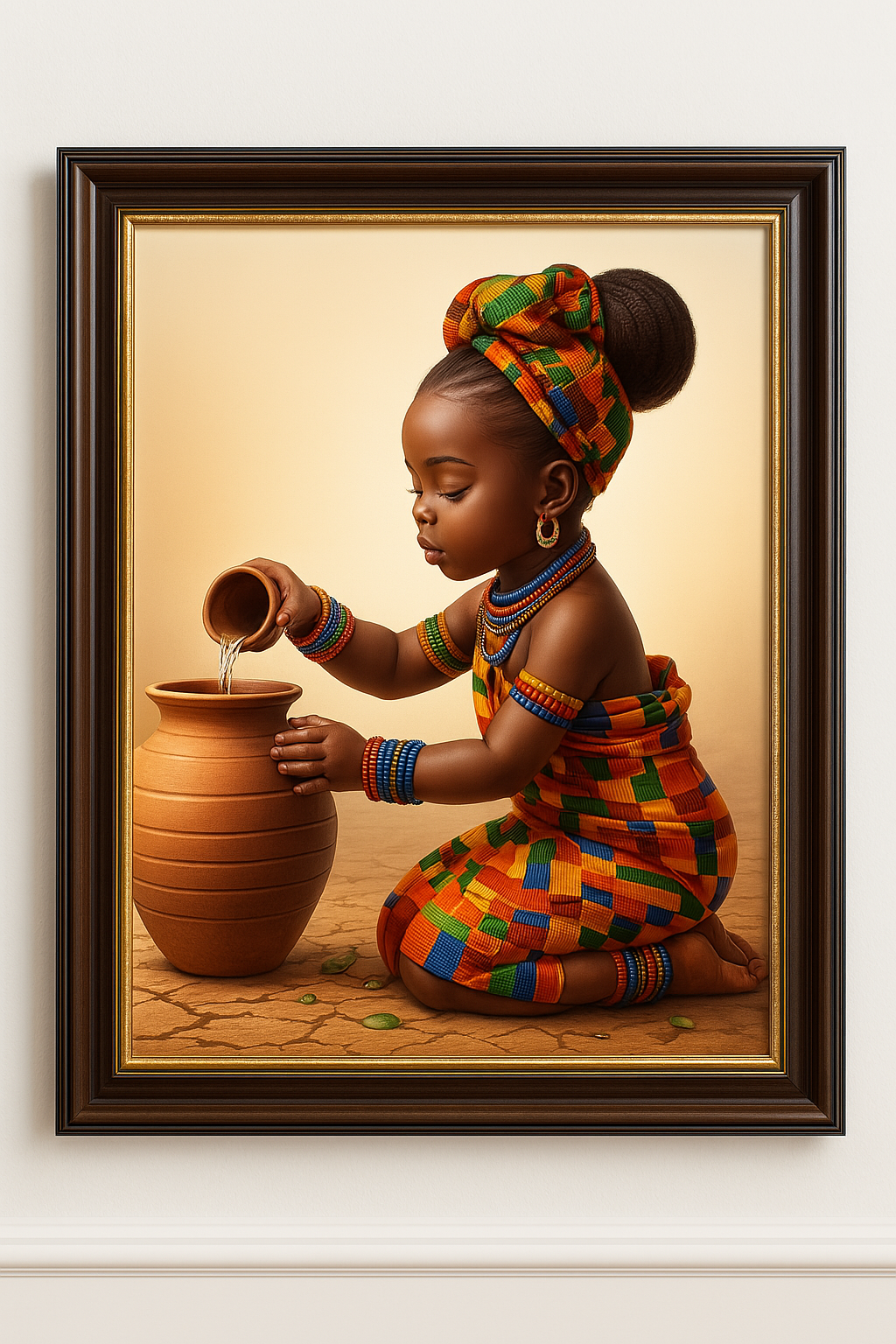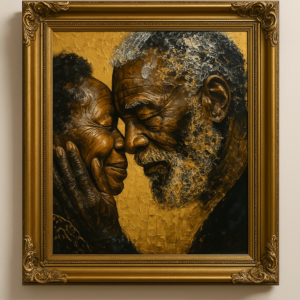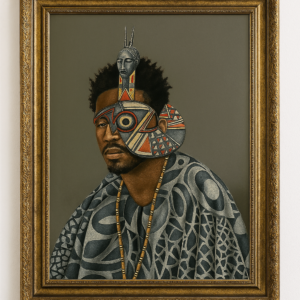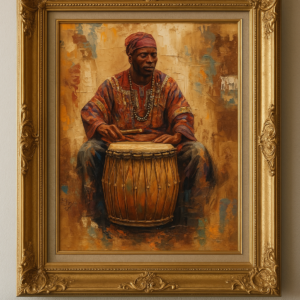Maji ya Maisha, meaning “Water of Life” in Swahili, is a radiant celebration of childhood innocence, cultural identity, and the sacred significance of water in African tradition. This vibrant artwork—depicted through a photorealistic painting—presents a tender moment frozen in time: a young African girl, adorned in richly patterned kente fabric and layered beadwork, gracefully pouring water into a large terracotta vessel. Every brushstroke and detail in this piece reflects not just technical brilliance but also profound emotional and cultural depth.
The young girl, kneeling on dry, cracked earth, becomes an emblem of purity, hope, and the cyclical nature of tradition. Her posture is one of mindfulness, focus, and ceremony—an almost instinctive reverence, despite her youth. Her small hands delicately cradle a clay cup from which she pours a gentle stream of water into the waiting pot. In many African cultures, this simple act is layered with symbolism. Water is life. It is ritual. It is memory. It is offering.
Her attire evokes the vibrancy of African royalty and the pride of ancestral heritage. The kente cloth she wears—a traditional Ghanaian textile woven with geometric precision and symbolic color combinations—speaks to the continent’s history of dignity, resistance, and cultural complexity. Her hair, neatly gathered into a braided bun and topped with a coordinating kente headwrap, symbolizes not only style but identity, community, and maternal lineage. Each beaded necklace and bracelet she wears is intentional, echoing centuries of adornment that transcends decoration—it is spiritual and generational.
Her calm face, soft eyes, and full lips convey grace beyond her years. The natural lighting of the scene gently highlights the dark richness of her skin, bringing contrast to the sun-baked background and deepening the spiritual warmth of the composition. The jar she fills, with its concentric ridges and earthy clay tone, is not merely a container but a cultural vessel. Across West, Central, and East Africa, similar pots are used for storing water fetched from rivers and streams, symbolizing sustenance, journey, and responsibility—often entrusted to girls from a young age as a rite of passage.
The scene, though tranquil, reverberates with layered storytelling. The spilled drops around her feet remind us of human fragility and the sacredness of each resource—especially water—in lands where drought and abundance coexist. In this way, Maji ya Maisha becomes more than an image; it becomes an ethical reminder of care, conservation, and reverence for natural resources.
The painting’s palette is warm and earthy, rooted in ochres, oranges, browns, and flashes of vibrant greens, blues, and yellows. These are the hues of the African sun, the soil, the fabric markets, and festival grounds. The overall composition is rounded and flowing, guiding the eye in a soft circular motion that mimics the cycles of life, from child to elder, from generation to generation.
The background—minimal and sunlit—provides just enough visual air for the subject to breathe without distraction, a design choice that amplifies the subject’s importance. The balance of stillness and motion, color and silence, modern technique and ancient symbol, all coalesce into a spiritual harmony that resonates through the frame.
Framed in a handcrafted luxury wooden frame with gold inlay, this artwork becomes a museum-worthy centerpiece. The protective glass finish offers clarity while preserving every minute detail—from the threads in the fabric to the light reflecting on the surface of the clay pot.
Maji ya Maisha is perfect for collectors, cultural institutions, children’s spaces, or homes that seek to tell stories of resilience, grace, and tradition. It is both a tribute to the wisdom of African heritage and a contemporary reminder of the values we pass on to the next generation: respect, responsibility, grace, and the gift of water—life itself.
This artwork can also serve as an ideal piece for gift-giving during milestones such as birthdays, naming ceremonies, and rites of passage. It invites viewers to pause and reflect, not just on the beauty of African culture, but on the quiet power of daily rituals that carry centuries of meaning.





Reviews
There are no reviews yet.